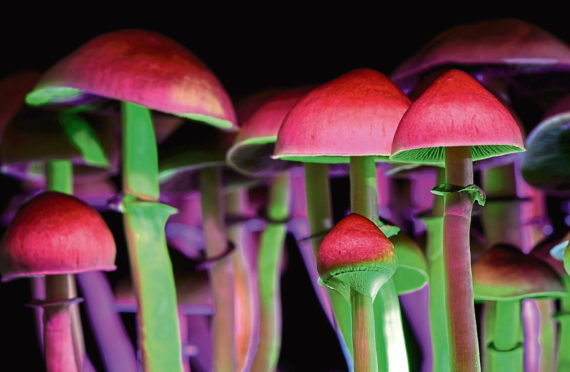
From dark forests to mouldy floorboards, spores of fungi can be found everywhere – and yet the alien-like organisms remain a mystery to most.
Here, Aliya Whiteley, author of the The Secret Life of Fungi, tells Alice Hinds the Honest Truth about magical mushrooms and more.
What are the perfect conditions for fungi to breed?
If you’ve ever struggled with mouldy walls, or gone out walking in the woods during a wet autumn, you might think you already know the answer to this. A lot of fungi like the damp. But there are so many fungi. They can be found on every continent, in every condition.
Most people only think of mushrooms when they hear the word fungi. Why is that wrong?
Mushrooms are the fruiting bodies of some fungi – a bit like how apples are the fruiting bodies of certain trees. So, mushrooms are just the part that swells up in the right conditions, ready to release spores to start the life cycle all over again. And there are so many other types of fungi – rusts, smuts, yeasts, the kind that live on or in animals, and the kind that form strong relationships with plants. We are surrounded by them, and we barely seem to notice them.
Is it true fungi were stowed away on the space station?
Both bacteria and fungi found their way on to the Mir space station and the ISS, and lived happily behind panels, on spacesuits, on cables, and around window frames. They came as a surprise to the astronauts. Fungi such as Penicillium and Cladosporium can survive high radiation levels, so the conditions on the stations proved no problem. Scientists have conducted experiments that show it’s also possible for some fungi to adapt and survive in open space.
Have scientists uncovered any particularly rare fungi?
It doesn’t belong to the realm of science so much as gastronomy – truffles can be incredibly rare and can fetch sky-high prices. They are expensive to cultivate and take years to grow. They’re so difficult to find in the wild that we leave it to trained animals with sensitive noses, such as pigs or dogs.
I once read an old book that included tips on how to train your dog to willingly give up its truffle find. There was also a section on how to identify where truffles grow by staring at the way certain types of fly hovered over tree roots at sunrise. I suspect training a dog might be the easier option…
What is the world’s most poisonous fungi?
The vast majority of fatal poisonings by mushrooms in the UK has been due to the ingestion of the Death Cap – Amanita phalloides. Eating only half a cap would kill most adults. There’s an idea that a very poisonous mushroom should look dangerous – bright red or spotted, maybe – but the Death Cap is pale, yellowish or greenish white, and looks similar to other mushrooms that are edible. It’s very easy to mistake for something tasty.
What is psilocybin, and why is it called “magic”?
Psilocybin is a psychedelic compound found in some species of fungi, including Psilocybe semilanceata, which is also known as the Liberty Cap or the “magic mushroom”.
Humans have known about the properties of these mushrooms for centuries. They can alter mood and affect consciousness, and research has recently been conducted into how they could be used medically, such as to aid those with depression. It’s currently illegal to pick or possess any fungus that contains psilocybin in the UK.
In what way are mushrooms similar to bananas?
The banana industry is dominated by just one variety, which is susceptible to a fungal disease called Fusarium wilt. If that fungal disease wiped out that variety it could destroy the industry. Similarly, the mushroom industry in Europe and North America also tends to be dominated by one variety, as button, chestnut and portobellos are all Agaricus bisporus. However, there are many other edible mushrooms, so we’re not really reliant on only one kind.
The Secret Life of Fungi, Elliott & Thompson, £12.99, is out now.

Enjoy the convenience of having The Sunday Post delivered as a digital ePaper straight to your smartphone, tablet or computer.
Subscribe for only £5.49 a month and enjoy all the benefits of the printed paper as a digital replica.
Subscribe